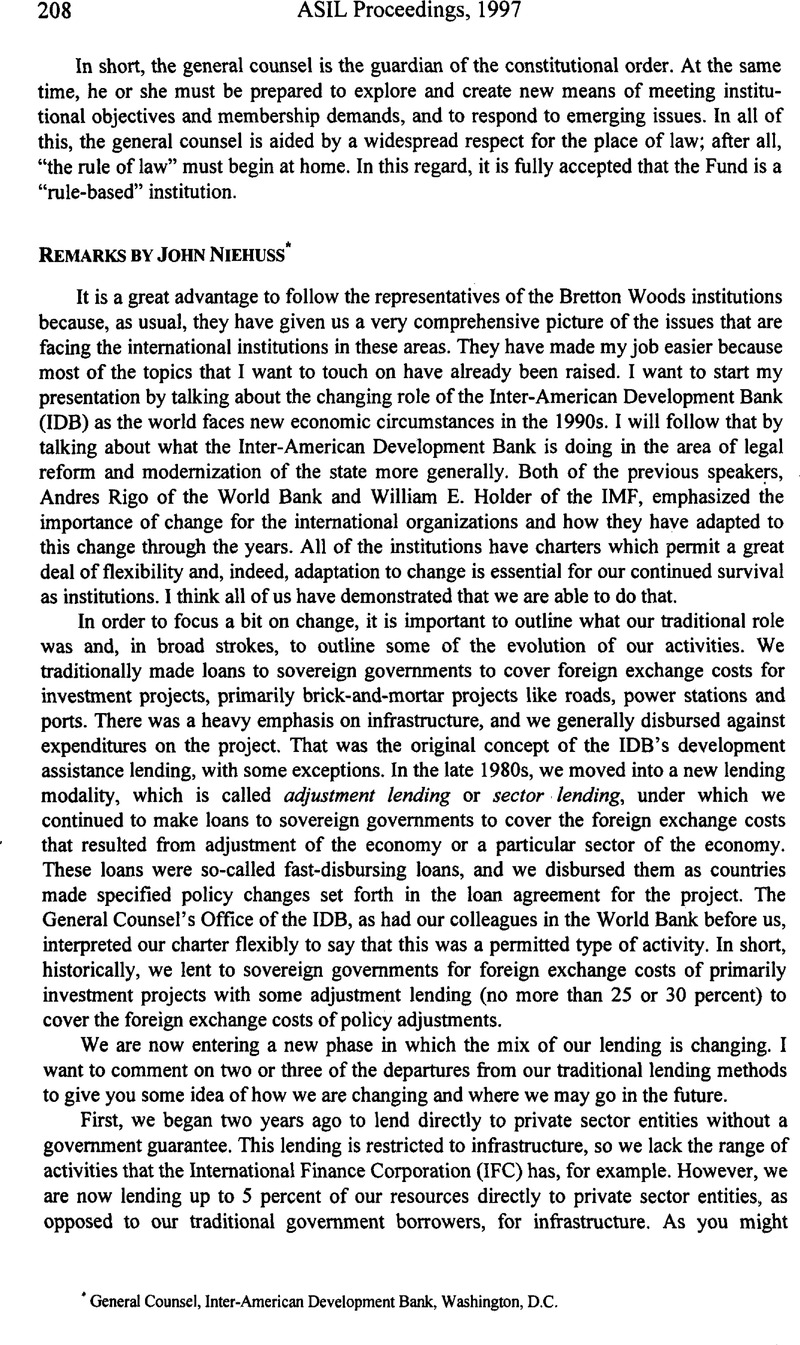No CrossRef data available.
Published online by Cambridge University Press: 28 February 2017

1 As used here, and in current Bank documents, the term “World Bank” includes both the International Bank for Reconstruction and Development (IBRD) and the International Development Association (IDA). IDA does not have separate staff and is equally served by the IBRD management and staff.
2 On October 14, 1986, the EDs issued an interpretation to the effect that the “1944 gold dollar” which is the standard of value of the IBRD’s capital according to its Articles of Agreement and which has formally ceased to exist since 1978 (after its convertibility into gold for the benefit of official holders had been terminated in 1971), has been replaced by the SDR according to the SDR value on July 1, 1974, i.e., by US$1.20635. This “interpretation, ” which is more of a practical attempt to fill in a gap created by the demise of the gold dollar, and which was explicitly adopted “until such time as the relevant provisions of the Articles of Agreement are amended, ” was issued after elaborate discussion in an ad hoc Board Committee on the basis of a detailed legal opinion by the General Counsel. For details see 2 Ibrahim F.I. Shihata, The World Bank in a Changing World 71-126 (1995).
3 With the exception of one formal “interpretation” of the “gold dollar” issued by IDA’s EDs in 1987, following an earlier decision by the IBRD’s EDs to the same effect.
4 Amendment of the IBRD Articles of Agreement requires, after approval by the Board of Governors, further approval by three fifths (60 percent) of members having 85 percent of the total votes. Amendment of the IDA Articles requires the same process, with 80 percent, rather than 85 percent of the total votes.
5 See Reparations for Injuries Suffered in the Service of the United Nations, 1949 I.C.J. 74 (Advisory Opinion of Apr. 11).
6 This opinion is published with some adaptation as Chapter 2 of 1 Ibrahim F.I. Shihata, The World Bank in a Changing World (1991).
7 In the case of ICSID, the constituent convention was opened for signature by decision of the Bank’s Executive Directors after the Board of Governors authorized its preparation.
8 For details, see Ibrahim F.I. Shihata, Miga and Foreign Investment (1988).
9 The “Development Committee” is a joint committee of the Boards of Governors of the World Bank and the International Monetary Fund, established in 1974. All member countries are represented in this twenty-four member committee.
10 For details, see Ibrahim F.I. Shihata, Legal Treatment of Foreign Investment, The World Bank Guidelines (1993).
11 These Include MIGA And Foreign Investment (1988); The European Bank for Reconstruction and Development—A Comparative Analysis of the Constituent Agreement (1990); 1 The World Bank in a Changing World (1991); Legal Treatment of Foreign Investment—The World Bank Guidelines (1993); The World Bank Inspection Panel (1994); 2 The World Bank in a Changing World (1995); Complementary Reform, Legal, Judicial and Other Institutional Reform Supported by the World Bank (1997).